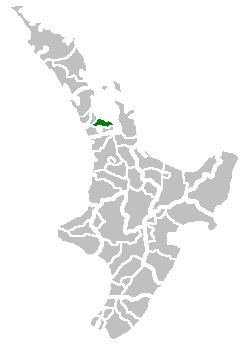Country New Zealand Website manukau.govt.nz Area code 09 | Time zone NZST (UTC+12) Area 683 km² Local time Tuesday 4:24 AM | |
 | ||
Weather 18°C, Wind SW at 27 km/h, 75% Humidity Team Counties Manukau Rugby Football Union | ||
Manukau city auckland new zealand
Manukau City is a former territorial authority district in Auckland, New Zealand, that was governed by the Manukau City Council. The area is sometimes referred to as "South Auckland", although this term never possessed official recognition and does not encompass areas like East Auckland, which was within the city boundary. It was a relatively young city, both in terms of legal status and large-scale settlement – though in June 2010, it was the third largest in New Zealand and the fastest growing. In 2010 the entire Auckland Region was amalgamated under a single city authority, Auckland Council.
Contents
- Manukau city auckland new zealand
- Corkscrew coaster pov rainbow s end manukau city auckland new zealand
- History
- Geography
- Transport
- Population
- Wards and suburbs
- Prominent people
- Local government
- Sister cities
- References
The name Manukau, from the Manukau Harbour west of the city, is of Māori origin, and means 'wading birds', although it has been suggested that the name of the harbour was also sometimes rendered as Mānuka, meaning a marker post with which an early chief is said to have claimed the area.
Corkscrew coaster pov rainbow s end manukau city auckland new zealand
History
Manukau City was formed by the amalgamation of Manukau County and Manurewa Borough in 1965. The city expanded in 1989 with New Zealand-wide reorganisation of local government, absorbing Papatoetoe City and Howick Borough, but losing some land to the newly formed Papakura District. On 1 November 2010 Manukau City Council was abolished and the governed area was amalgamated into the Manukau, Howick, Manurewa-Papakura, and Franklin wards of the new Auckland "super city".
Geography
The Manukau City area is concentrated immediately to the south of the Otahuhu isthmus, the narrowest connection between Auckland City and the Northland region and the rest of the North Island. At its narrowest, between the Otahuhu Creek arm of the Tamaki River (itself an estuarial arm of the Hauraki Gulf) in the east and the Mangere Inlet (an arm of the Manukau Harbour) to the west, the isthmus is only some 1500 metres across.
The area to the south of the isthmus contains the heart of Manukau, sprawled on either side of state highways 1 and 20, the latter of which approaches from the west after crossing Mangere Bridge. The area known as Manukau Central is located close to the junction of these two highways, some 20 kilometres southeast of the centre of Auckland city.
Considerable rural and semi-rural land to the east of Manukau Central was within the city council district. This extended towards the Hunua Ranges close to the Firth of Thames, and took in such communities as Clevedon and Maraetai.
Beyond Manukau City to the south is Papakura and the Franklin District, which are less urban but still part of the Auckland Region and to some extent regarded as an integral part of Auckland's urban area.
Auckland Airport is located in Mangere, in the west of Manukau, close to the waters of the Manukau Harbour. Manukau City includes the theme park Rainbow's End, and one of the oldest shopping malls in the country, now called Westfield Manukau City.
Transport
In 2009, work started on the Manukau Branch passenger railway from the North Island Main Trunk at Puhinui. The new branch will serve a university campus.
Population
For some years before the 1989 reorganisation of local government, Manukau City had the highest population of any city or district in the country.
Like most of the rest of the region, Manukau is ethnically diverse, and is home to many peoples, especially Māori and members of Polynesian ethnicities, with a recent concentration of Asians in and near Howick. It is densely populated by New Zealand standards, despite having very few apartments.
As of the late 2000s, slightly less than 50% of the city's population identifies as European, with 17% as Māori, 27% as Pacific and 15% as Asian, with the balance made up of other groups.
Wards and suburbs
The Manukau City was divided into seven wards:
Prominent people
Local government
The Manukau City Council was the elected local authority of the city from 1965 until November 2010 when the Auckland Council was created.
Manukau City had an elected Youth Council which primarily acted as an advisory committee and advocate for youth in the city.
